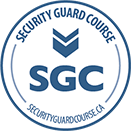On April 23, 2025, a Bush concert at Prospera Place in Kelowna, BC made headlines for all the wrong reasons. During the performance, event security guards were involved in several physical altercations with concertgoers. According to news reports from agencies such as Global News and Oak Bay News, some witnesses felt that the security guards used excessive force, while others defended the guards’ actions.
Witnesses described seeing a woman “slammed face first” onto the ground by security. Another witness said that multiple security guards grabbed the woman beside her, twisting her arms behind her back before escorting her away. This was allegedly over a drink that was (accidentally?) poured on one of the guards.
While many of the comments were critical of security’s actions, some witnesses defended them, saying that intoxicated fans were out of control. They observed security yards being punched, scratched, and even grabbed by the throat. Overall, it sounded like a very chaotic scene in a crowded area with many, many safety concerns.
This incident really shines a light on a critical and challenging reality for all security professionals. In chaotic and unsafe situations, when should force be used, and how much force is appropriate? The bad news is that there is no black and white answer to these questions. The good news is that good assessment and decision-making skills can be learned by training to understand the legal framework around the use of force, and tools like the National Use of Force Framework.
In this post, we will look at how security guards can make better use of force decisions, using a structured process. This process focuses on professionalism, self control, and clear documentation, to protect themselves, their employers, and the public.
The Importance of Understanding Excessive Force
Excessive force occurs when the type or amount of force used is determined to be greater than necessary to gain control or protect yourself or others. Section 25 of the Criminal Code of Canada authorizes security guards to use reasonable force to execute their lawful duties, such as making arrests. Section 34 allows for force to be used in self-Defense, while Section 35 covers the protection of property. All of these use of force authorities include the concept of ”reasonable force”. If the force used is deemed unreasonable by the courts, Section 26 of the Criminal Code states that the person who used the force will be held criminally liable.
Understanding all of these legal authorities, and their limitations can help security guards to make good decisions, even under pressure. Large events like concerts create serious safety issues for security to manage. Emotions can run high, alcohol is often influencing behaviour, lighting is poor, noise makes verbal communication difficult, and the large crowd makes it difficult to move around. One other significant concern is the fact that security is grossly outnumbered, and surrounded on all sides. Regardless, none of these factors negate security’s obligation to take actions that are necessary, proportionate, and acceptable.
How to Determine Reasonable Force: A Practical Framework
Every situation is different, and must be handled based on the unique factors at play. With that in mind, security guards can apply the following 5-step process to guide their decision-making:
1.) Threat Assessment:
Is this person passively resisting, actively resisting, or being assaultive?
Are they posing a risk to themselves, others, or property?
Are they verbally aggressive, but physically compliant?
Are there any signs of intoxication, drug use, or mental health issues?
Example
As a security guard, you observe someone aggressively shoving others near the front of the stage. They are screaming, visibly intoxicated, and ignoring verbal directions to settle down and stop pushing people. A threat assessment would suggest that this person is displaying assaultive behaviour, putting the safety of others at immediate risk. Therefore, intervention may be necessary.
2.) Attempt De-Escalation:
Always attempt to de-escalate the situation first, unless an imminent risk requires immediate action.
- Use a calm, but firm voice.
- Offer clear, simple choices such as, “You can stay if you keep your hands off of other people, otherwise you will be removed from the concert.”
- If they agree to comply, give them some space but maintain observation. This can help let the person save face and dignity.
Example
A fan is shouting at another concertgoer, waving their arms around but not physically assaultive. A security guard might approach and calmly ask the fan to move to another area, away from the source of their frustration.
3.) Use the Minimal Force Necessary:
If physical intervention is required, use the lowest level needed to gain and/or maintain control.
- Escort holds for passively resistant subjects.
- Soft physical control (eg. joint locks) for low to moderate active resistance.
- Hard physical control (eg. strikes, takedowns) may be required when faced with high level active resistance or assaultive subject behaviours.
Example
Suppose a fan is refusing to leave when directed by security, but is only displaying low level passive resistance. The guards should begin with a standard escort to guide the fan out of the area, only escalating in response to an escalation in the fan’s level of resistance.
4.) Continually Reassess:
Force must remain reasonable at all times, not just at the beginning of the interaction. If the subject’s behaviour escalates, guards may need to escalate their use of force in response to maintain control. Likewise, if the subject calms, the guards must reduce the intensity of the force they are applying.
- Regularly ask yourself, “Is this necessary?”
- Remember that force is only used to control or escape.
Example
If a fan actively resists security’s attempt to escort them out of the building, the guards may need to apply transport wrist locks to maintain control, increasing or decreasing the application of pain as a motivator depending on the level of subject cooperation.
5.) Document Everything:
Any time force is used, it must be well documented. Be sure to explain:
- Why the force was necessary.
- What other non-force options were considered or attempted.
- The type and level of force that was used.
- Why it was proportional to the subject’s level of resistance.
- The subject’s behavior before, during, and after.
Good documentation is essential in case there are allegations of excessive force, unlawful behaviour, or violations of policy. A use of force incident may be scrutinized by the courts, either through criminal or civil proceedings, and the quality of the documentation can make all of the difference in the outcome.
Realistic Scenarios Based on the Kelowna Concert
Let’s take what we know about the type of challenges that security faced at this event and hypothesize some likely situations and how to manage them.
Scenario A:
Dealing with an Intoxicated, Disruptive Fan
Situation: An intoxicated fan is repeatedly pushing other patrons near the front of the stage, ignoring security’s verbal instructions, and trying to start arguments with the people around them.
Good Approach:
First: Verbal intervention. “Your behaviour is affecting other people’s safety and enjoyment of the show. Please move back, keep your hands off of others, and focus on enjoying the performance. If you continue, you will be required to leave.”
Second: If there is no compliance, with at least two guards, apply standard escort holds and begin walking the individual towards the exit.
Third: If they respond by pushing, pulling or trying to strike out, the guards should escalate their response to transport wrist locks and if necessary, a controlled takedown while awaiting additional security or police to arrive.
Bad Approach:
- Approach and take immediate control of the person, without any verbal interaction or attempt to de-escalate.
- Use hard physical force such as knee strikes, or slamming them into a barricade.
- Shout at, berate or insult the individual while dragging them towards the exit.
Scenario B:
Dealing with a Physically Assaultive Fan
Situation: A fan punches a security guard and then attempts to run onto the stage.
Good Approach:
First: Taking immediate hard physical control through carefully targeted distractionary strikes followed by a takedown may be required to protect security and the public, or to make an arrest.
Second: Maintaining control of the individual on the ground while awaiting assistance to arrive, possibly placing the subject into handcuffs (if trained and authorized).
Third: Guards adjust their level of force as control is obtained and the threat from the subject is minimized.
Bad Approach:
- Engage in a back and forth fist fight with the fan, attempting to cause as much harm as possible.
- Make threatening comments such as, “I’ll make you pay for that!” or, “Now it’s my turn.”
- Continuing to apply high levels of force and unprofessional verbal comments after the subject is safely restrained.
Scenario C:
Dealing with Verbal Insults
Situation: A fan yells profanities and insults at the guards, but does not threaten or attempt to physically harm them.
Good Approach:
- Ignore the profanity and insults.
- Use verbal conflict management and de-escalation strategies, rather than physical intervention.
- Maintain professionalism, and stay focused on your objectives, despite the provocation.
Bad Approach:
- Grab hold of or assault them, just for their verbal insults.
- Taking what they say personally and becoming emotionally upset.
- Responding with verbal insults of your own.
Why Public Perception Matters
Large events, like the concert in Kelowna remind security guards that the court of public opinion is swift and unforgiving. These days everyone carries a camera connected to the internet, and everyone considers themselves an “expert” on everyone else’s behaviour.
Security would do well to remember:
- Any use of force will likely be recorded.
- The guards involved will have no control over where that video gets posted, or who will see it.
- Poor public opinion can harm your company’s reputation, future contracts, and even result in criminal charges and civil lawsuits.
- Even when legally justified, the optics of the use of force can cause serious harm. A physical altercation NEVER looks good.
Pro Tip: The use of force should always be the option of last resort, and applied in a lawful and professional way.
Practical Tips for Guards Working Public Events: complete specialized event security training
- Know the Use of Force Framework: It is designed to provide real-time guidance to help security guards assess their situation and select the appropriate response. It is also a valuable tool during the post-incident documentation process.
- Prioritize De-Escalation: Gaining voluntary compliance looks better, and results in fewer complaints, charges and lawsuits.
- Control Your Emotions: Anger leads to poor judgement, which leads to poor actions.
- Work as a Team: There is safety in numbers. Taking a team approach also reduces the amount of force necessary, which is safer for everyone.
- Communicate Clearly: Verbal direction should be simple and clear. They should also be loud enough for the subject, and nearby witnesses to hear and understand.
- Preserve the Subject’s Dignity: Treat people professionally and with respect, even when they aren’t showing the same courtesy.
- Write Detailed Reports: Protect yourself from legal and employment related liability.
Conclusion
There is no “black and white” answer to exactly how much force a security guard should use in every situation. There are simply too many unique variables. However, there are structured assessment and decision-making processes that can be used to facilitate sound and defensible actions, even under pressure.
The Kelowna incident should serve as yet another wake-up call for security guards. Training, emotional self-regulation, and discipline are not “nice to have.” They are the foundation of a professional security guard.
Processes that lead to good judgement skills, once learned and applied, become second nature. As with all skills, it first requires an initial period of focus and effort. If you or your team are looking for opportunities to improve your training and decision-making skills, please check out the many training programs offered through SecurityGuardCourse.ca.
References
Femia, V. (2025, April 25). Fans allege security at a Bush concert in Kelowna were using ‘excessive force’. Global News. https://globalnews.ca/news/11149893/fans-security-bush-concert-kelowna-excessive-force/
Cunningham, J. (2025, April 25). GSL Group ‘aware of recent incidents’ after alleged altercations at Kelowna concert. Oak Bay News. https://www.oakbaynews.com/news/gsl-group-aware-of-recent-incidents-after-alleged-altercations-at-kelowna-concert-7967784








